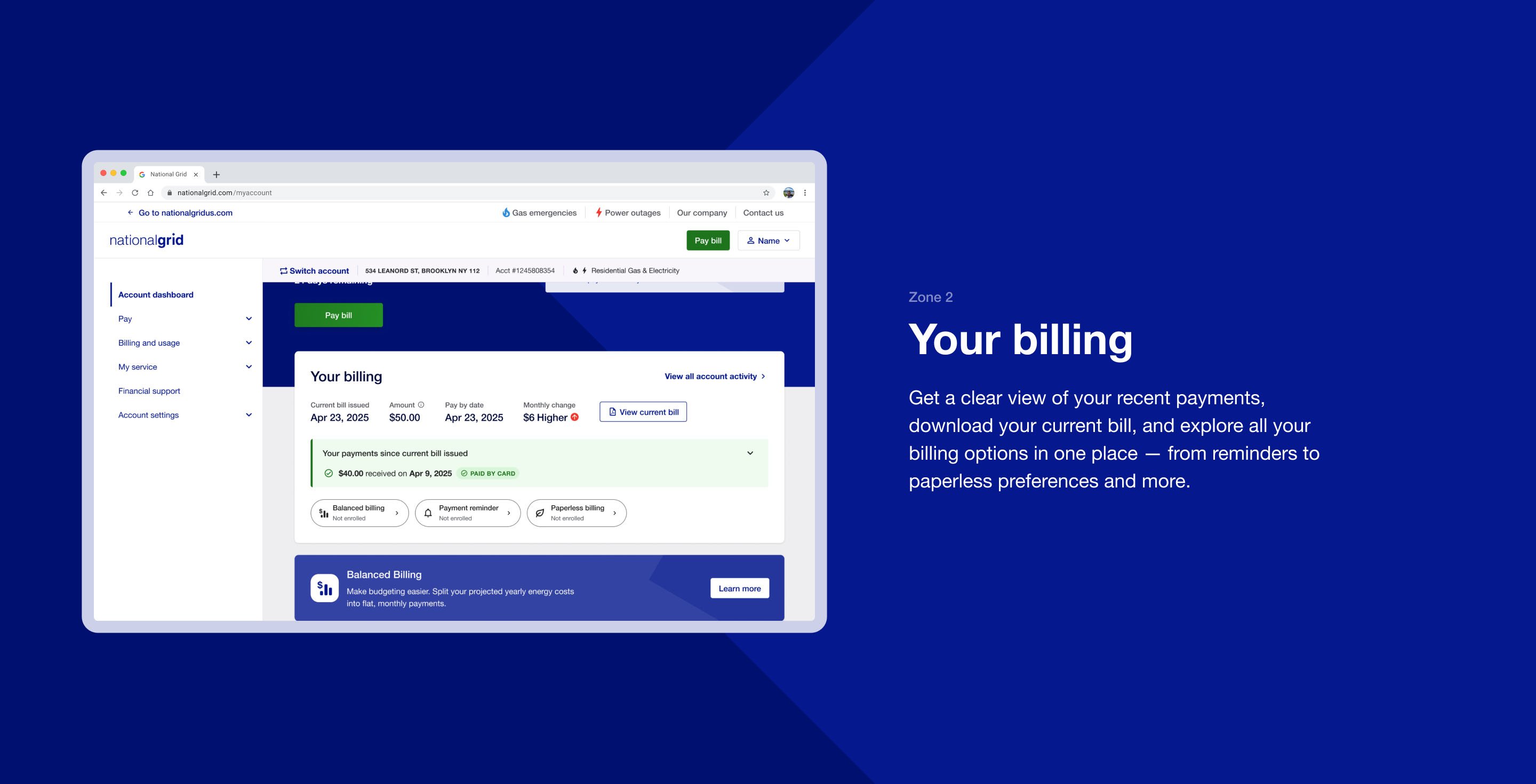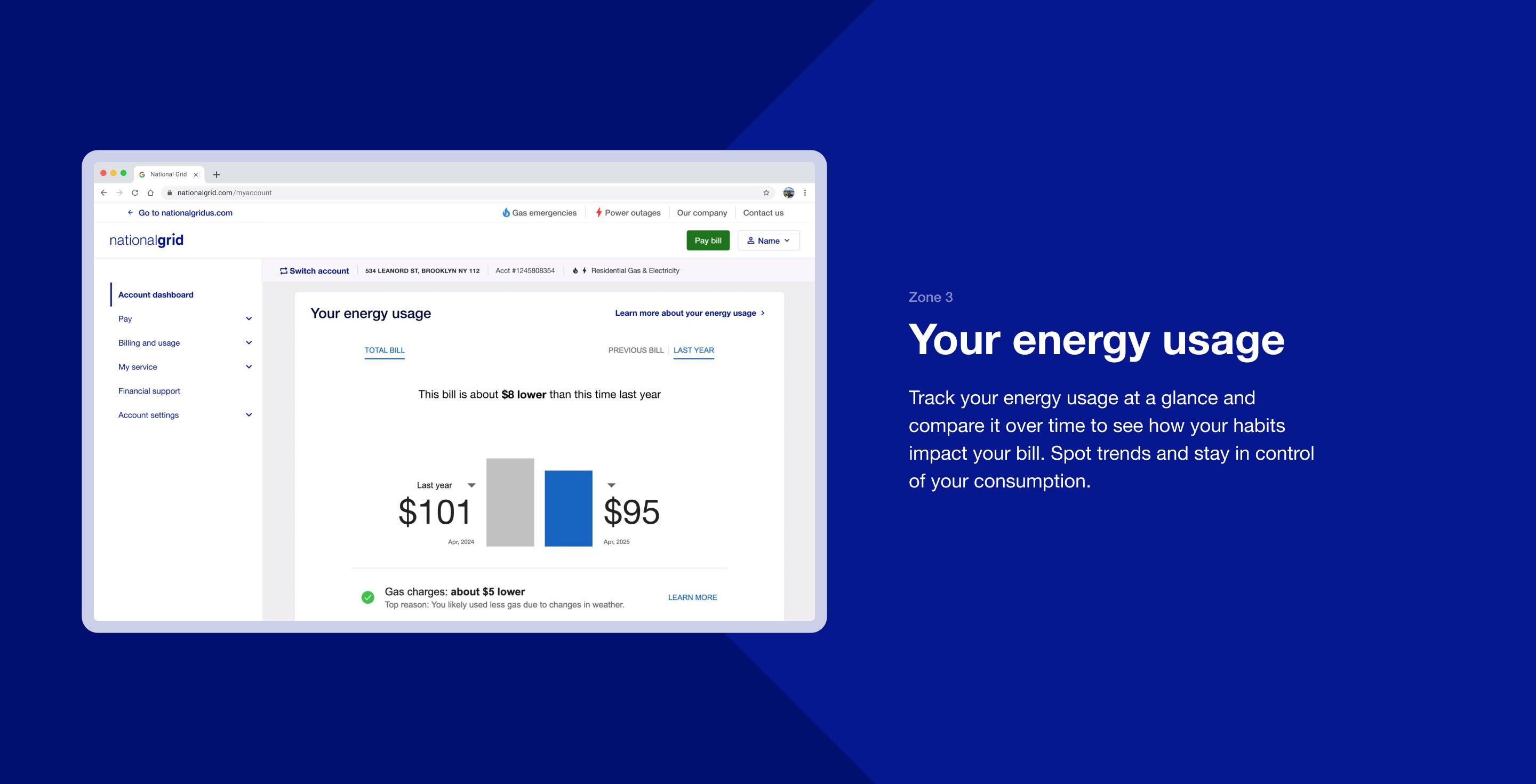National Grid
Transforming how millions of households engage with their energy
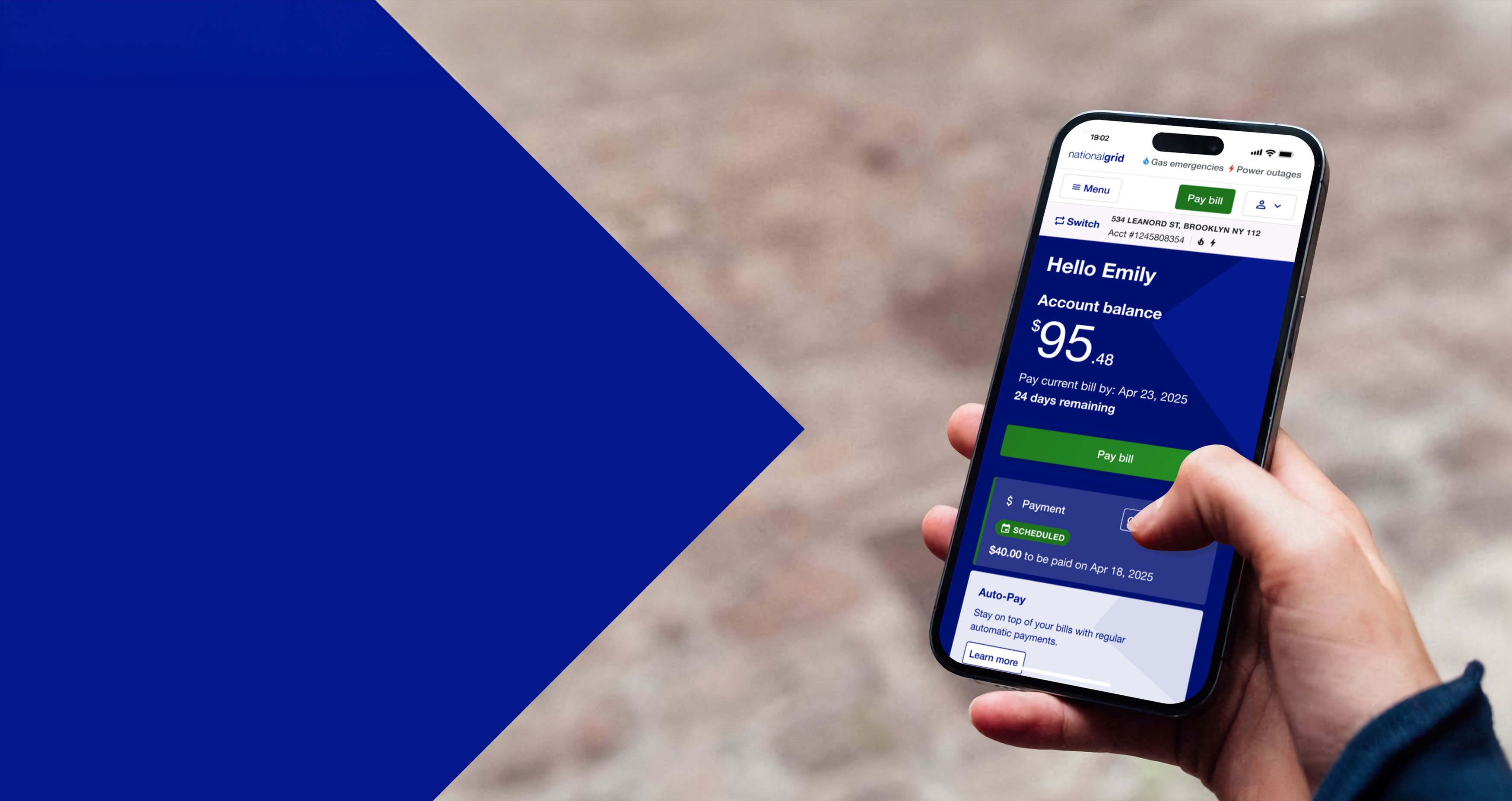
For too many households, opening an energy bill means bracing for bad news. Yet if we want people to engage more positively with their energy use — to feel informed, in control, and supported — it has to start with a digital experience that empowers, not intimidates.
ustwo partnered with National Grid to transform how millions of households in the Northeastern US understand, manage, and engage with their energy — building trust and driving long-term behavior change.
We truly wouldn’t have reached this milestone without the hard work from the ustwo team. You all brought innovation, customer focus and fun to National Grid that still lives on.
The Challenge
For years, energy use has been a source of confusion and anxiety. A typical utility bill listed what you owed but rarely helped you understand it — or what you could do about it. Customers were overwhelmed by unclear charges, dense layouts, and communications that felt more threatening than helpful.
The legacy design didn't reflect the reality of people's lives. A red warning box, meant to indicate a missed payment, felt punitive. Critical information was buried in blocks of text. And those who needed the most support were often let down by the existing system.
In an era of rising energy costs, National Grid recognized that creating a more sustainable future would require empowering households to understand and manage their energy use, beginning with a better digital experience.
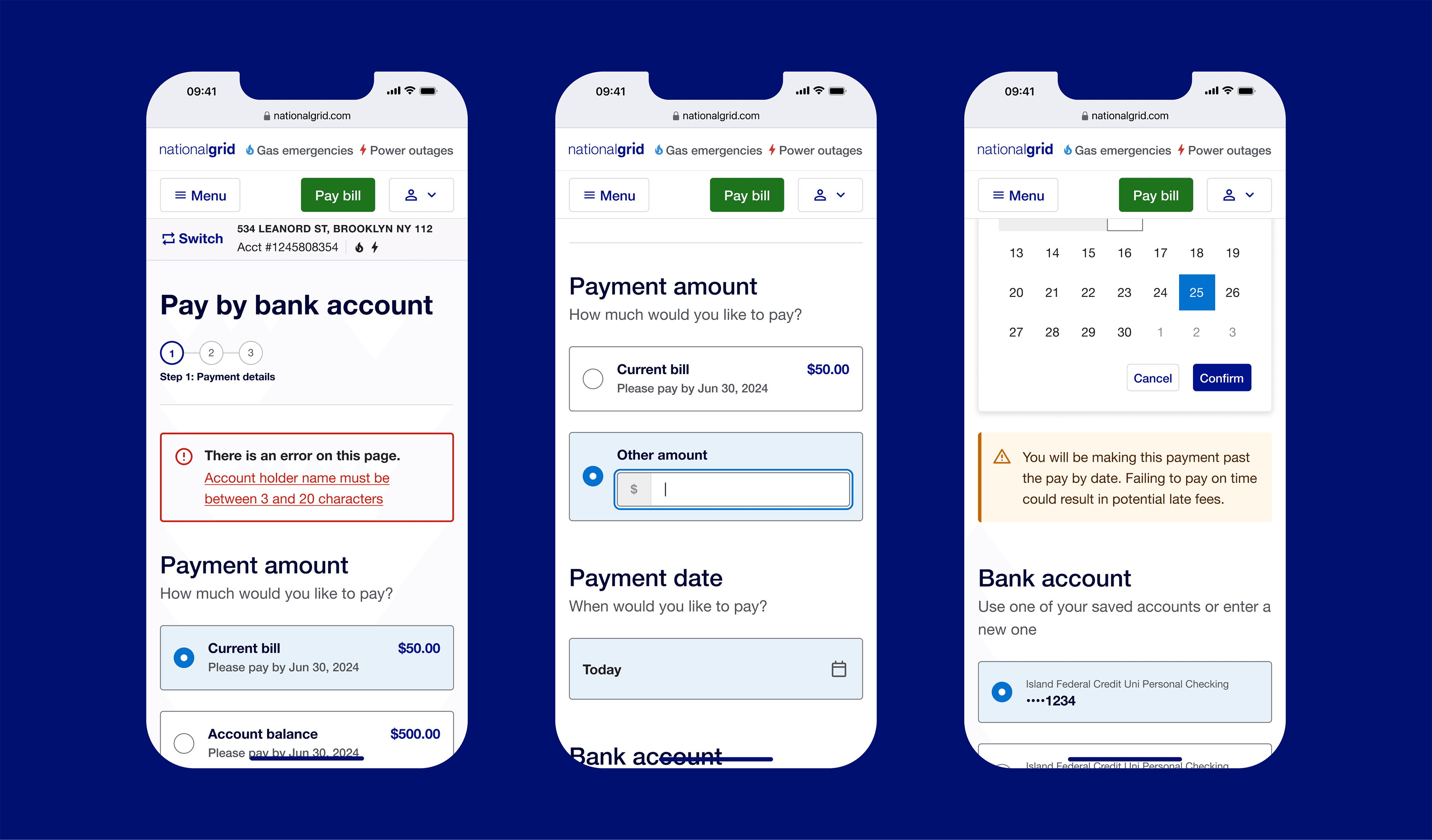
Our Process
We embedded with National Grid's US team as an integrated squad of 30 people, contributing to a wider programme of over 120 team members across web and app. Together, we led design, product, and front-end development to create a digital experience rooted in research, guided by empathy, and built to scale.
Customer research played a central role, especially in understanding the emotional toll of energy communications for households under financial stress. One customer put it starkly:
"Oh my God, I'm not going to have any heat, or lights. I've got kids, I've got food in the fridge and it's cold outside. When you see that big red box, your heart sinks."
Insights like these shaped everything from content hierarchy to tone of voice. We divided the dashboard into three clear zones: payment, billing, and usage. The red of the warning box was softened to yellow, signaling importance without triggering fear. Usage data was clarified with icons and plain language. And for those behind on payments, the message shifted from urgency to understanding. We also made it easier to start or stop service, saving customers a call to the contact centre. Delightful moments, like a windmill animation on the loading screen, reminded users of their role in a greener future.
Our front-end developers helped build key components across the redesigned web and app, contributing to an experience that now supports everything from usage insights to account management tools. We also worked hand-in-hand with National Grid's engineering teams to ensure this experience could scale. To launch confidently, we co-designed and managed a phased rollout — releasing by segment and region, and activating new capabilities as performance and trust grew.
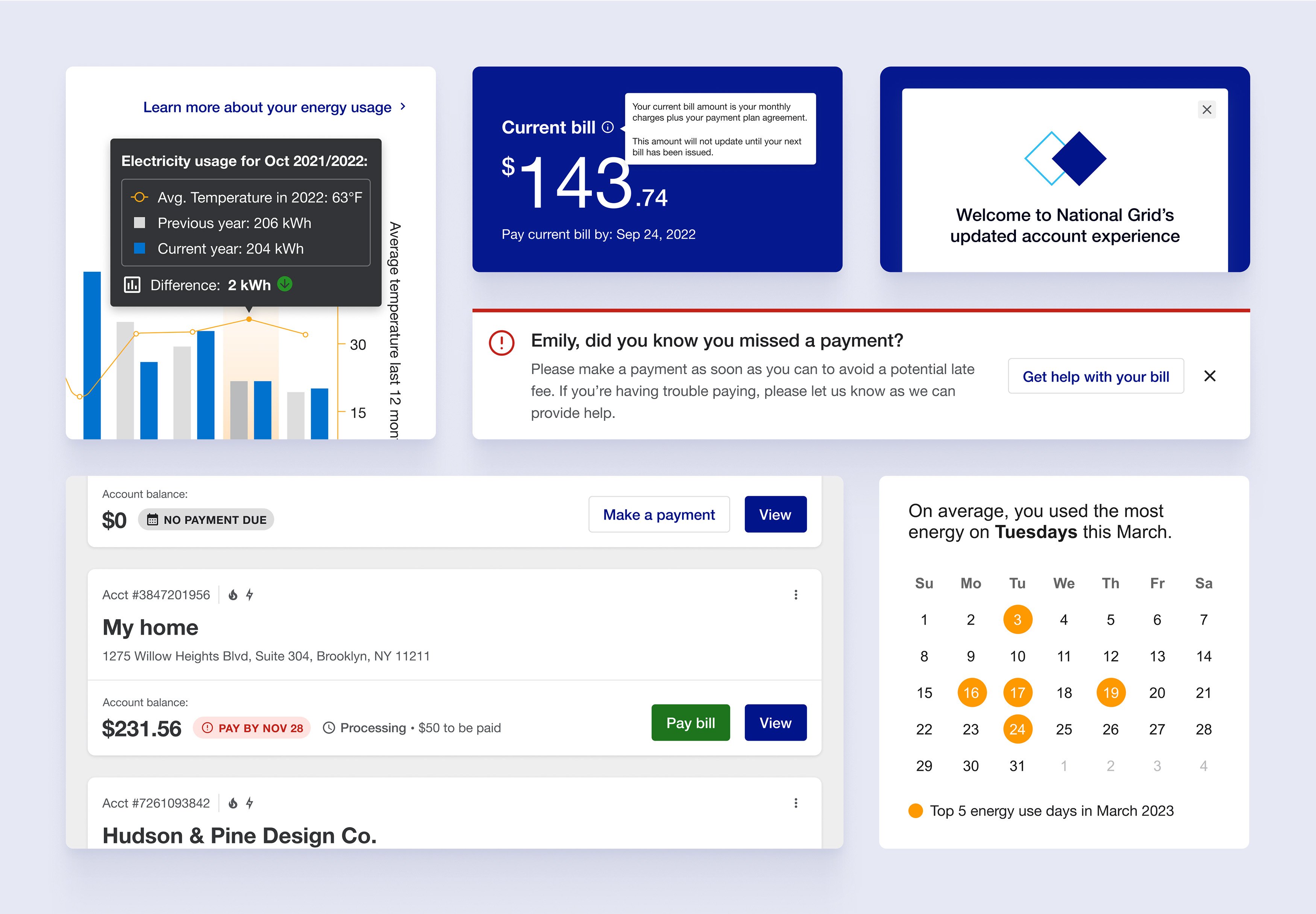

The Impact
This work went far beyond billing. We laid the foundation for meaningful change: reducing call center volume, improving digital engagement, adopting tools like smart meters and energy insights, and moving off an aging mainframe toward more modern ways of working.
Since releasing these updates, National Grid has created positive outcomes for millions of users:
- 60% reduction in incident tickets
- 15% increase in online payments
- 35%+ increase in engagement with energy insights tools
By investing in research, creating cross-functional alignment, and putting customer needs at the center, the team set the foundation for long-term transformation. It showed that when you lead with empathy, you create a system that works better for everyone.

Why It Matters
People's relationship with their energy use has long been plagued by confusion, stress, and a lack of support. But with empathy and thoughtful design, that can change.
We set out to build something deeper than a better bill: a more human relationship between people and their energy use. Because when people feel supported, they're more likely to make smarter choices, engage with new tools, and become active participants in a more sustainable future.
Meaningful change doesn't start with technology. It starts with people — and the systems that support them, one household at a time.
At SXSW 2025, we reunited with Kelly Carney (formerly VP of Customer & Digital Experience at National Grid US) to reflect on what it takes to design meaningful change in one of the most complex, critical industries today.

